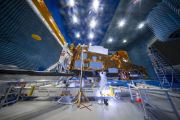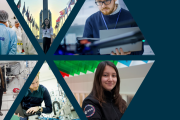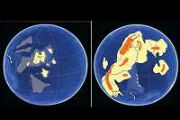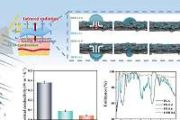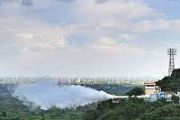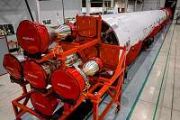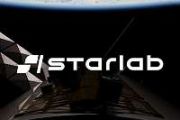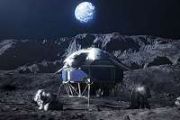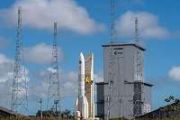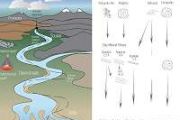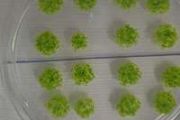
Copernical Team
BlackSky signs contract exceeding 30 million dollars to supply Gen-3 ISR for defense client
 BlackSky Technology Inc. has secured a multi-year contract worth over 30 million dollars to integrate its Gen-3 high-cadence tactical intelligence, surveillance, and reconnaissance (ISR) services into the secure operational environment of a strategic international defense customer.
The program aims to boost sovereign space-based intelligence capacities by leveraging BlackSky's commercial t
BlackSky Technology Inc. has secured a multi-year contract worth over 30 million dollars to integrate its Gen-3 high-cadence tactical intelligence, surveillance, and reconnaissance (ISR) services into the secure operational environment of a strategic international defense customer.
The program aims to boost sovereign space-based intelligence capacities by leveraging BlackSky's commercial t Insects on the space menu

Long before humans reached orbit, insects had already shown they could handle the hurdles of spaceflight. Light, highly adaptable and nutritionally rich, these resilient animals present an attractive option for European researchers studying reliable food sources for long-duration missions.
Earth from Space: Branco River, Brazil
 Image:
Ahead of the 30th UN Climate Change Conference of the Parties (COP30) taking place in Belém, Brazil, from 10-21 November, this IRIDE image shows the Branco River and its surrounding forests in the Brazilian state of Roraima.
Image:
Ahead of the 30th UN Climate Change Conference of the Parties (COP30) taking place in Belém, Brazil, from 10-21 November, this IRIDE image shows the Branco River and its surrounding forests in the Brazilian state of Roraima. FSU physicists discover new state of matter in electrons, platform to study quantum phenomena
 Electricity powers our lives, including our cars, phones, computers and more, through the movement of electrons within a circuit. While we can't see these electrons, electric currents moving through a conductor flow like water through a pipe to produce electricity.
Certain materials, however, allow that electron flow to "freeze" into crystallized shapes, triggering a transition in the stat
Electricity powers our lives, including our cars, phones, computers and more, through the movement of electrons within a circuit. While we can't see these electrons, electric currents moving through a conductor flow like water through a pipe to produce electricity.
Certain materials, however, allow that electron flow to "freeze" into crystallized shapes, triggering a transition in the stat First evidence of Ice XXI phase observed at extreme pressure and room temperature
 The Korea Research Institute of Standards and Science (KRISS) has observed for the first time the multiple freezing-melting process of water at room temperature under ultrahigh pressures exceeding 2 gigapascals and on a microsecond timescale. This has resulted in the discovery of a previously unknown crystallization pathway and the identification of a new ice phase named Ice XXI.
Ice gener
The Korea Research Institute of Standards and Science (KRISS) has observed for the first time the multiple freezing-melting process of water at room temperature under ultrahigh pressures exceeding 2 gigapascals and on a microsecond timescale. This has resulted in the discovery of a previously unknown crystallization pathway and the identification of a new ice phase named Ice XXI.
Ice gener Austrian PRETTY CubeSat joins ESA OPS-SAT Space Lab under Graz leadership
 The Austrian Space Agency and the European Space Agency have extended the mission for the PRETTY CubeSat, which will continue under the OPS-SAT Space Lab with management transferred to Graz University of Technology.
PRETTY, developed jointly by TU Graz, Beyond Gravity Austria, and Seibersdorf Laboratories, has orbited for over two years in a sun-synchronous polar orbit at an altitude just
The Austrian Space Agency and the European Space Agency have extended the mission for the PRETTY CubeSat, which will continue under the OPS-SAT Space Lab with management transferred to Graz University of Technology.
PRETTY, developed jointly by TU Graz, Beyond Gravity Austria, and Seibersdorf Laboratories, has orbited for over two years in a sun-synchronous polar orbit at an altitude just Student CubeSat set for launch to support NASA IMAP mission with space weather data collection
 A group of undergraduate students from the University of New Hampshire, Sonoma State University, and Howard University have collaboratively designed and built a CubeSat called 3UCubed, now scheduled for launch on a SpaceX rocket from Vandenberg Space Force Base, California, no earlier than November 10, 2025.
The small satellite mission is linked to NASA's Interstellar Mapping and Accelerat
A group of undergraduate students from the University of New Hampshire, Sonoma State University, and Howard University have collaboratively designed and built a CubeSat called 3UCubed, now scheduled for launch on a SpaceX rocket from Vandenberg Space Force Base, California, no earlier than November 10, 2025.
The small satellite mission is linked to NASA's Interstellar Mapping and Accelerat SpaceX to Acquire EchoStar AWS-3 Spectrum Licenses in $2.6 Billion Stock Deal
 EchoStar has amended its agreement with SpaceX to sell its entire portfolio of unpaired AWS-3 spectrum licenses for approximately $2.6 billion in SpaceX stock, valued as of September 2025. These nationwide licenses are part of 3GPP Band 70n, providing uplink frequencies from 1695 to 1710 MHz, and the deal builds on an earlier agreement between the two companies announced in September.
The
EchoStar has amended its agreement with SpaceX to sell its entire portfolio of unpaired AWS-3 spectrum licenses for approximately $2.6 billion in SpaceX stock, valued as of September 2025. These nationwide licenses are part of 3GPP Band 70n, providing uplink frequencies from 1695 to 1710 MHz, and the deal builds on an earlier agreement between the two companies announced in September.
The 

 Image:
Swoosh!
Image:
Swoosh! 





